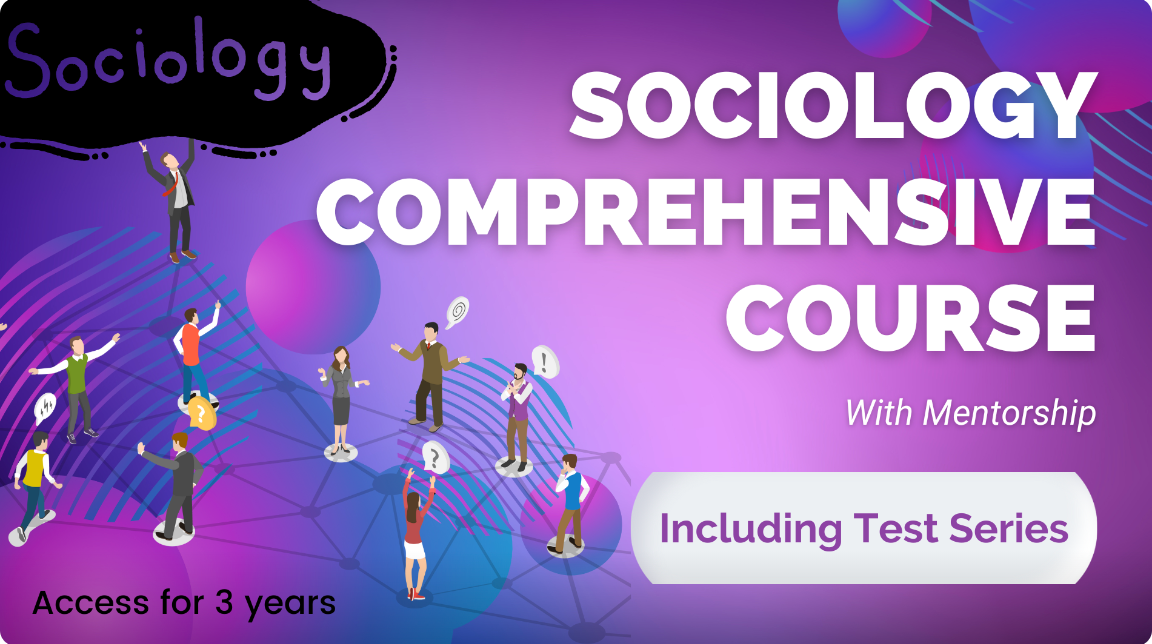Questions
- Discuss Yogendra Singh's thesis on the Modernization of Indian Tradition. And evaluate its applicability in the present-day context. (20 Marks)
- How did the Anti-Brahmanical movements during the colonial period challenge and reshape existing social structures in India? (20 Marks)
Download Model Structures PDF
Model Structures
Q1. Discuss Yogendra Singh's thesis on the Modernization of Indian Tradition. And evaluate its applicability in the present-day context. (20 Marks)
Introduction
- Modernization is a value-laden concept that refers to a model of a progressive transition from a 'pre-modern' or 'traditional' to a 'modern' society.
Main Body
- According to Yogendra Singh, the sources of modernization are either internal or endogenous or from outside society.
- These two sources of modernization need to be analysed both at the levels of social structures and traditions.
- Yogendra Singh makes his point very clear when he says that it is not necessary that the processes that bring social change in the society also bring change in the traditions.
- He discussed two sources of social change and analysed their impact on the modernization of Indian tradition.
- Social Change:
- Orthogenetic (Internal)
a) Buddhism, Jainism b) Bhakti, Sufi - heterogenetic (External)
a) Islamic b) British
- Yogendra Singh advocated that Orthogenetic sources of change was reformist in nature and did not bring modernization.
- Islamisation does not have much impact on the modernization of Indian society as both are tradition directed society. He argued that Modernization in India started mainly with the western contact, especially through the establishment of British rule. It brought our far- reaching changes in culture and social structure of Indian society.
- Present society Examples:
- Legal system, urbanization, industrialization etc. Along with these modernization norms, structural modernization also took place like the rational bureaucratic system, judiciary, and army which have uniform character throughout the country.
- Dipankar Gupta claimed that India has been undergoing modernization which can be termed as mistaken modernity. The growth of this process was selective and segmental.
- In the present-day context, along with modernization, India has also been undergoing the process of rationalization. Primordial identity has transformed itself to suit the present needs of modernization.
- Eg- use of caste in politics for mobilization, Khap panchayats, the practice of untouchability, sex-selective abortion etc are.
Conclusion
- Thus modernization in India has led to both continuities as well as change. It has also led to the reinforcement of tradition.
Q2. How did the Anti-Brahmanical movements during the colonial period challenge and reshape existing social structures in India? (20 Marks)
Introduction
- Anti-Brahminism or Anti-Manuvaad is the ideology of being opposed or expressing hostility towards the Brahminism, who are the priestly caste in Hinduism and traditionally the highest ranked social caste. Anti-Brahminism can manifest itself as the hatred, prejudice, or discrimination directed against Brahmins.
Main Body
Anti-Brahmanical movements during the colonial period were:
- Dalit movement: In the traditional caste system, the lowest castes were at the bottom of the social ladder. They were subjected to various caste disabilities. The downtrodden Dalits raised various struggles to fight their social exploitation in all forms. Mahar movement, Ambedkar's advocacy etc were directed against Brahminism.
- SATYA Shodak samaj: Mahatma Jyotiba Phule formed the Sayta Shodak Mandal in 1873 with the aim of liberating non-Brahmins from the clutches of Brahmanism. They totally rejected the Vedic tradition and the Aryan heritage. He regarded the Aryans as conquerors and destroyers of the indigenous non-Aryan culture. He launched a vigorous attack on the Vedas. He made fun of the puranas and ridiculed those who believed in the absurd stories narrated by their Brahmin authors.
- DRAVIDA KAZHAGAM MOVEMENT: It was based on the rejection of the Brahmanical Aryan religion and culture. The DK movement in Tamil Nadu idealized the Dravidian culture and religion and attacked the Aryan culture and religion. The self-respect movement started by Ramaswamy Naickar advocated that his followers should have their own priests. The movement drew its support from low castes. Its leaders worked hard to escape the tyranny of the Brahmins and to extol the virtues of the Dravidian culture.
- SNDP movement: It pertains to the Ezhavas of Kerala who were untouchables. The ideology of the movement was formulated by Sri Narayana Guru Swami. He gave them a new religion of one God and one caste which transformed their life>set of religious institutions parallel to that of the variety of Brahmanical Hinduism.
Conclusion
- Thus, Anti-Brahmanical movements during the colonial period attacked Brahmanic supremacy and all privileges granted to them. It intended to reform the society and generate self respect to those who were oppressed by caste hierarchy.

